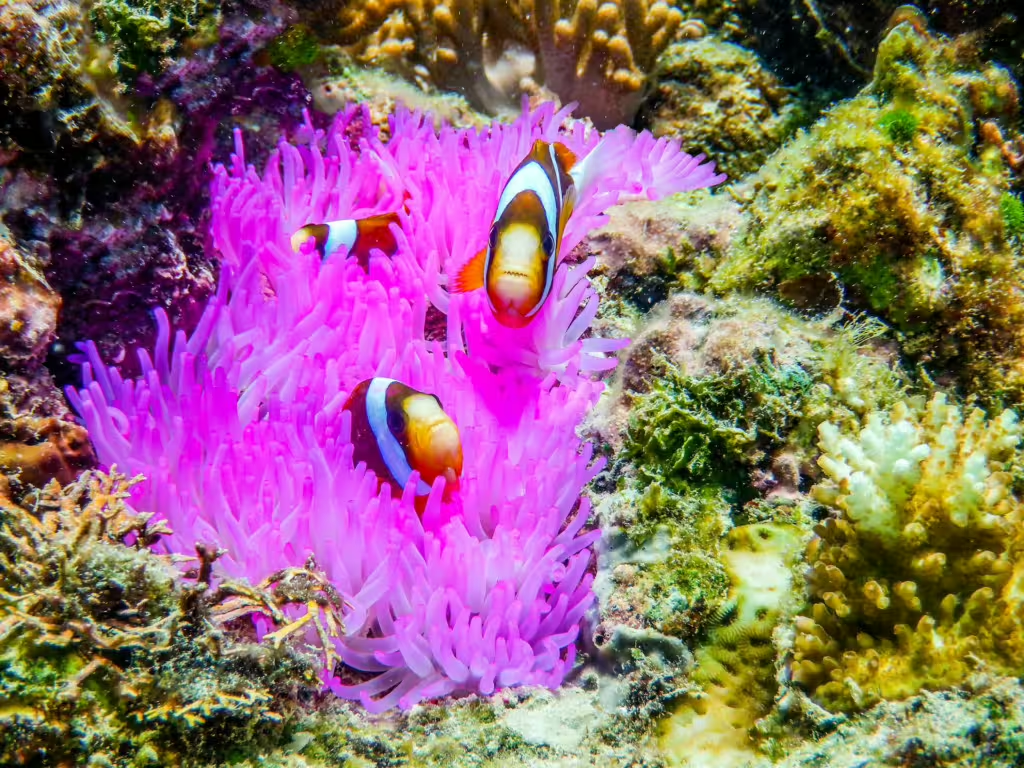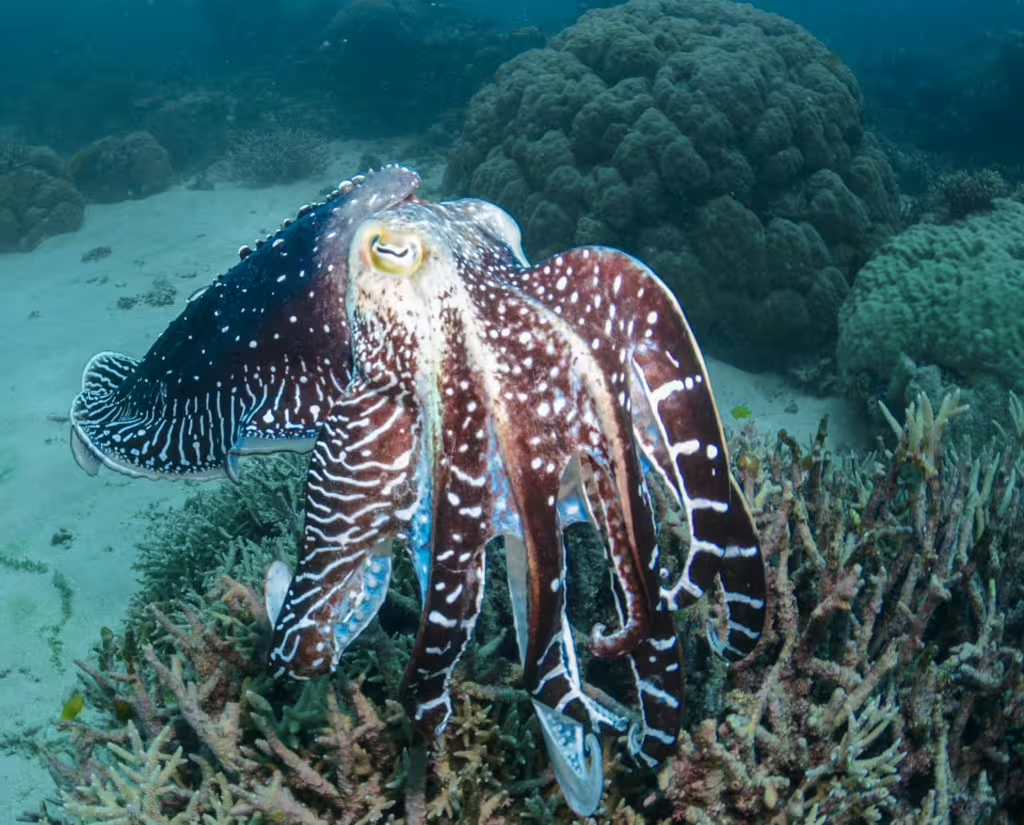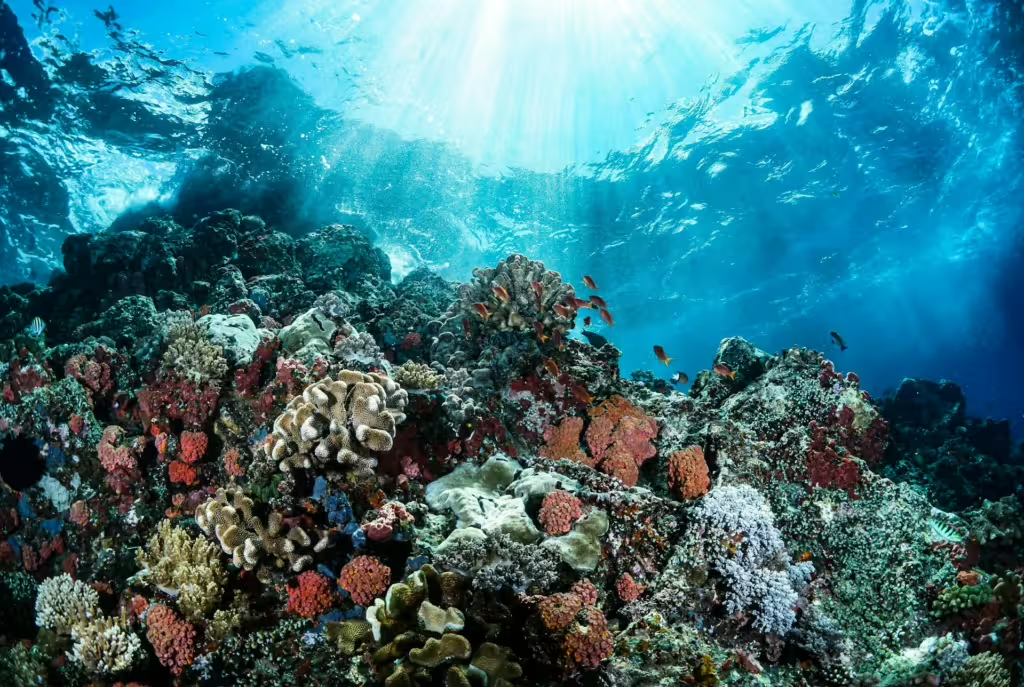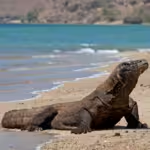Located off the northeastern coast of Australia, the Great Barrier Reef is one of the most iconic and biodiverse ecosystems on the entire planet. This massive habitat stretches for over 1400 miles, making it the absolute largest coral reef system in the world. In fact, the sheer scale and beauty of the reef have made it a UNESCO World Heritage Site.
If we think of a coral reef as a sort of vibrant underwater metropolis, its easy to see why they are so vital to the health of various marine ecosystems. The Great Barrier Reef itself is home to an astounding variety of marine species and as a result, it serves as a crucial hub for countless species and the key to the continued survival of many more; ourselves included. In many ways, this particular reef may well be the most important underwater ecosystem on Earth today.
Yet this status and its unfathomable importance, is what makes the story of the Great Barrier Reef so sorrowful. Despite the continued necessity of its existence, the Great Barrier Reef is facing severe threats directly and indirectly caused by human beings. Whether by climate change, pollution, overfishing, or coral bleaching, the Great Barrier Reef is in grave danger. These challenges, if left unaddressed, will eventually lead to irreversible damage that even this resilient ecosystem will not be able to recover from.
The result of this damage would go on to threaten all of the marine life the reef supports, along with many other marine and terrestrial species. In this article, we will explore several of the most amazing species that call the Great Barrier Reef home, we will examine why the reef is so essential to global survival, and finally, we will look into some of the ongoing threats that jeopardize its future.
Clownfish (Amphiprioninae)

Well, we found Nemo. The clownfish is an iconic member of the reef ecosystem. With their bright orange and white coloration, these funny, vibrant little critters are one of the most recognizable species of the Great Barrier Reef. Known for their symbiotic relationship with sea anemones, the clownfish is immune to the stinging tentacles of the anemone, which provide a protective home for the clownfish. In return, the clownfish offer the anemones food usually in the form of small invertebrates. This is an example of a mutualistic relationship, which benefits both species and contributes to the continued health of the reef ecosystem.
At the same time, clownfish also play an important part in the food web in the Great Barrier Reef. These fish feed on zooplankton, and in turn, are preyed upon by larger fish. This is a prime example of the circle of life and their very existence in the reef helps to maintain the biodiversity of the area. Clownfish are sometimes regarded as health indicators of the reef itself, as they are often the first species to show signs of environmental stress, such as coral bleaching.
Green Sea Turtle (Chelonia mydas)
The green sea turtle is one of the most beloved sea creatures in the ocean, let alone the Great Barrier Reef. These placid terrapins can frequently be seen gliding through the warm, shallow waters on the lookout for seagrass and algae; their favorite meals. Ancient reptiles that are quite well known for their long migrations between nesting sites and feeding grounds, green sea turtles help maintain the health of seagrass meadows that are vital for the reef’s ecosystem.
Green sea turtles are also crucial in that they maintain the balance of a reef’s food web. By grazing on seagrass, they prevent the overgrowth of algae, which has been known to smother coral reefs. In this way, their presence keeps the reef running at homeostasis. Unfortunately, green sea turtles face numerous threats to their continued existence, including habitat destruction, illegal hunting, and entanglement in fishing gear. These amazing creatures are also just as vulnerable to the effects of climate change as other marine animals. In this case, the rising sea temperatures greatly impact their nesting success.
Great White Shark (Carcharodon carcharias)
The great white shark is an apex predator of the marine world. This gigantic fish is one of the most famous and feared predators in all the oceans and one of its favorite hunting grounds is the Great Barrier Reef. As it roams the waters of the reef, the shark’s appetite helps it to regulate the populations of other marine species, ensuring a more balanced food web. Sharks of all kinds are key components in controlling the numbers of prey species, which prevents those animals from overgrazing on smaller organisms that are vital to coral reefs, such as sea urchins and small fish.
Great white sharks don’t spend all their time on the reef, however. These fish, like many others, are actually migratory and have been known to travel vast distances across the oceans in search of food and breeding. By and large, though, they tend to stick to the Pacific Ocean. Despite their fearsome reputation and crucial role in maintaining the ecosystem, sharks face numerous threats, including illegal hunting, habitat loss, and climate change, which has had a marked effect on their migratory patterns.
Humphead Wrasse (Cheilinus undulatus)
The humphead wrasse might not be as popular as the other species on this list, but that doesn’t mean it is any less essential. Also known as the Napoleon wrasse, this large, colorful fish is a critical part of the reef ecosystem. Known for its distinct, bulging forehead and vibrant green and blue coloration, the humphead wrasse is useful to the reef in that it controls populations of herbivores, such as sea urchins, that could otherwise damage the reef.
These wrasse are opportunistic feeders, which means they eat a variety of marine life, including crustaceans, mollusks, and small fish. In this way, they help keep prey populations down and stop them from becoming too numerous and problematic. Unfortunately, the humphead wrasse is currently listed as vulnerable by the International Union for Conservation of Nature (IUCN). This status is mostly due to overfishing and habitat degradation.
Manta Ray (Manta birostris)
Manta rays are one of the most majestic creatures in the ocean and though they migrate long distances between their breeding and feeding grounds, the Great Barrier Reef is one of their main homes. With their graceful wingspans and sweeping movements, these shark relatives can essentially glide through the water, feeding on plankton, krill, and small fish as they go. They are gentle giants and filter feeders that help in controlling plankton populations in and around the reef. They also play a vital role in nutrient cycling.
Migratory and social by nature, manta rays are highly intelligent creatures; at least by fish standards. Unfortunately, manta rays face similar threats to their survival, either from overfishing, entanglement in fishing nets, or the destruction of their feeding habitats.
Coral (Scleractinia)
We could not talk about the importance of coral reefs without mentioning coral. At present, the Great Barrier Reef is home to over 400 species of coral, an astounding amount that was likely even larger in days long past. Nevertheless, each of these unique species contributes to the overall structure and diversity of the reef. Coral is the cornerstone of the Great Barrier Reef ecosystem. Not only does it provide habitat for countless marine species, it is also an important food source.. Coral reefs themselves are made up of tiny coral polyps that secrete calcium carbonate to form hard skeletons, which accumulate over time to create the complex structures that we recognize as coral reefs.
The thing is, corals themselves are highly sensitive to environmental changes, particularly temperature fluctuations, though they are also seriously affected by bad water quality. This means that the coral of the Great Barrier Reef is highly vulnerable to the effects of climate change, particularly coral bleaching caused by rising sea temperatures. In addition, coral reefs face threats from pollution, overfishing, and coastal development.
Parrotfish (Scaridae)
Parrotfish are colorful and charismatic creatures. These odd-looking little fish are inhabitants of the Great Barrier Reef and are well-known for their beak-like teeth. They use those teeth to deftly scrape algae from coral reefs, thereby playing a crucial role in maintaining the health of coral ecosystems. By feeding on this algae, parrotfish prevent it from overgrowing and smothering the coral. If this were to happen it could lead to coral die-off and reduced biodiversity throughout the reef and beyond its very borders.
Parrotfish are also important contributors to the reef’s nutrient cycling in that their excretions are quite sandy in nature. This sand helps to build and maintain the reef’s structure. In addition to their ecological role, parrotfish are a popular species among divers and snorkelers, contributing to the reef’s tourism industry; which is highly-important for spreading the word about its dangers. Sadly, parrotfish populations are threatened by overfishing, habitat destruction, and climate change; like so many other reef inhabitants.
Sea Sponge (Porifera)

At the bottom of the list is the simple sea sponges. We often don’t even recognize these creatures as animals at all, but they are, in fact highly important organisms. These filter feeders are able to extract nutrients from the water by pumping it through their porous bodies, there by forming an integral part of the Great Barrier Reef ecosystem. This filtration helps to maintain water quality and clarity on the reef. Porous as they are, sponges also provide habitats for small marine organisms, offering shelter to a variety of invertebrates and fish species.
There are numerous species of sea sponge that can be found on the Great Barrier Reef, each with its own unique characteristics and ecological role. Some of them aren’t soft and spongy at all, in fact, and they contribute to the reef’s structure by creating hard, calcium-based skeletons. Others, meanwhile, help to break down organic material, contributing to nutrient cycling. Sea sponges are also important for pharmaceutical research, as many species contain compounds with potential medical uses. Unfortunately, sponges are vulnerable to pollution, ocean acidification, and habitat destruction.

Why the Great Barrier Reef is Vital to Our Survival
Some people refer to the Great Barrier Reef as the “rainforest of the sea” due to its extraordinary biodiversity, but it is so much more than that. This immense reef provides countless ecosystem services, including supporting fisheries, regulating the climate that we, ourselves are damaging, and protecting coastal communities from increasingly severe storms…that we again had a hand in causing. This latter bit has to do with the fact that the reef acts as a barrier against storm surges and erosion, thus safeguarding coastlines and providing a natural defense against extreme weather events.
Furthermore, the reef plays a key role in the global carbon cycle. Like rainforests on land, the coral reef helps to absorb and store large amounts of carbon dioxide deep beneath the waves. The same is true for the marine plants that live among the coral, each contributes to the sequestration of carbon, mitigating the effects of climate change. As far as humans are concerned, the reef is also a one-of-a-kind meal ticket, supporting global food security, and acting as a source of protein for millions of people all over the world.
True Investigator Says…
As you can see, the Great Barrier Reef is an irreplaceable natural wonder that we and our marine neighbors need for our continued survival. This ecosystem is teeming with life and serves as a critical habitat for a multitude of marine and terrestrial species. The reef provides a wealth of resources and benefits to humanity, from climate regulation to food security, but by our own hand, it is steadily disappearing.
Despite the best efforts of some conservationists, human activity and climate change continue to threaten the reef and the amazing animals that dwell there. In order to protect the reef, we must make a concerted global effort by reducing carbon emissions, enforcing conservation measures, and promoting sustainable practices. The survival of the Great Barrier Reef is not just important for the species that live there—it is essential for the survival of countless ecosystems all over the world. If things continue as they are, the reef will wither and die, and many species , including humans will suffer as a result.
Discover more from TrueInvestigator
Subscribe to get the latest posts sent to your email.


